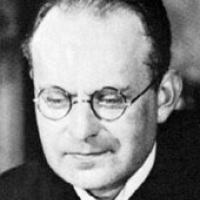
The Hypermodern Nimzo by GM Prasad and GM Panchanathan
This week we will be studying the Nimzo Indian defense. This opening was introduced by Grand Master Aron Nimzowitsch who can be called the Father of the so-called "hypermodern" chess era existing today. He has been one of the most influential writers in chess and his book "My System" is considered to be one of the best in the history of chess literature.
So far we have been using one model game for each of the openings that we have discussed. This time we decided to go with two model games. One to explain the right things to do, and the other to show what happens when things do not go your way.
We will summarize some of the basic ideas of the Nimzo in here; Black gives up his dark-squared Bishop intentionally very early in the game, let us try to understand some of the positional implications of this decision.
Advantages
1. Active Pieceplay - Black gains some useful momemtum by giving up his bishop to get ahead in development and activate his pieces.
2. Center Control (e4) - Since the Knight on c3 is removed from the board, Black takes control of the e4 square which makes it harder for white to advance his centre pawns.
3. Better pawn structure - The doubled pawns on the 'c' file make it harder for white to break through in the center.
4. Maintaining closed positions - Natural choice since open positions would favor White's Bishop pair.
Disadvantages
1. Loss of Bishop pair - Reduces the options for Black, restricted at several occasions to open up the position.
2. Less space - White gets the d5 advance many times creating more space and leaving him with possibilities to play on both wings of the board
3. Semi open 'b' file - The doubled pawns allow white to put pressure on the 'b' file by advancing his 'a' pawn and forcing Black to create some weakness in the queenside.
4. A strong potential for kingside attack - White's Bishop pair can be deadly if he can launch an attack on Black's King.
Now, Black does not try to maintain all his above-mentioned advantages. Often he has to choose one or two of his advantages at the cost of the others. For example, Black gives up his Bishop at times without ruining White's pawn structure; Black allows white to advance e4 to close the center; Black opens up the positions occasionally when it's favorable for him.
Let's take a look at the first game now...
4.e3 - The Rubinstein Variation.
4.f3 - The Samisch Variation.
2. Fix all his own pawns on dark squares to fill the void of his dark-squared Bishop.
3. Keep the center closed and White's weak doubled 'c' pawns intact.
Look at White's dark-squared Bishop, it is theoretically not a 'Bad' Bishop (A light-squared Bishop here for White would be termed as a Bad Bishop) however the fixed pawn chains leave the Bishop with no scope for play. The rest of the game is pretty self-explanatory.



